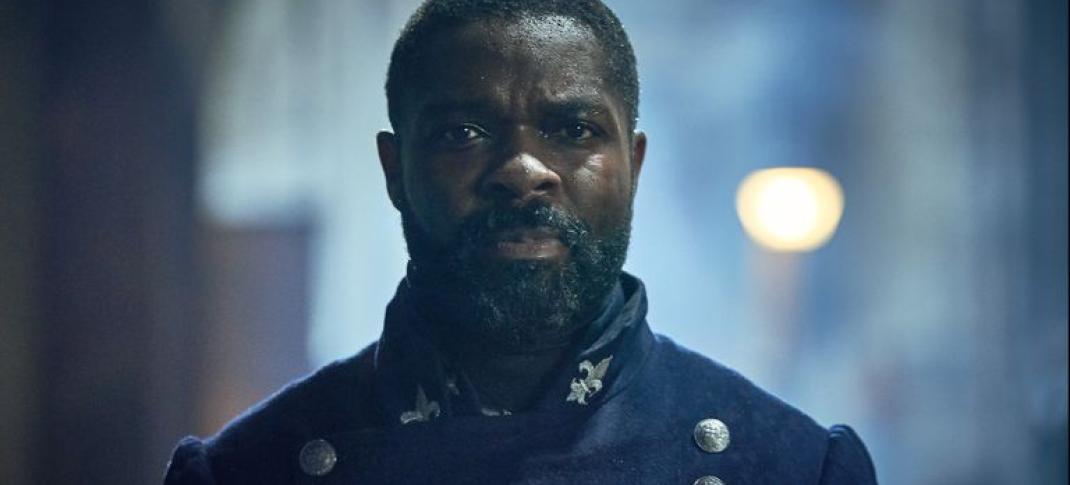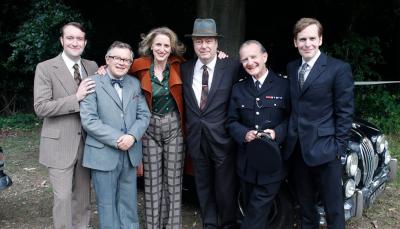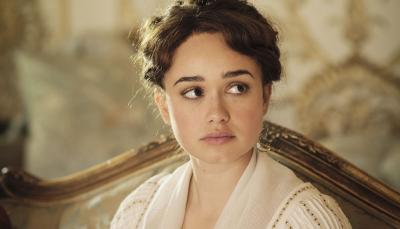Why We Should Embrace Historical Drama Casting That Looks Like America (and the U.K.)

Images are political
--Actor David Oyelowo, Inspector Javert in Les Misérables
A trend that's on the rise on both sides of the Atlantic, color-blind casting opens opportunities for actors of color, and makes dramas accessible to new audiences who can recognize themselves in the faces of the actors. And while I acknowledge that a man of African descent would probably not be promoted to Javert’s rank so early in royalist nineteenth-century France, I can’t think of a better actor for the role. I love the freshness and new depth brought to traditionally “white” roles—do you remember Sophie Okonedo’s fierce Margaret in The Hollow Crown?

Even better, it can be more historically correct than you might think. Sugar-producing European colonies in the Caribbean used slave labor from Africa, and slaves were brought back by sugar planters. Notably, the writer Alexandre Dumas - author of The Three Musketeers and The Count of Monte Cristo - was of African descent.
But it’s a common misconception that people of color came to England first in the eighteenth and nineteenth century, or even the twentieth century.
There have been waves of immigration for much longer, however. A couple of years ago the BBC aired a children’s cartoon on life in Roman Britain that included a dark-skinned man. Naturally, the usual suspects came out of the woodwork for a good rant about the purity of British blood, etc. Classicist Mary Beard rose to the defense, and suffered an ugly attack on social media for her efforts in pointing out that that Britain, like the rest of the Roman Empire, was a multicultural society, and there are historical records to prove it.
In the third century AD, a unit of North African Roman soldiers was garrisoned in a fort near Hadrian’s Wall. It’s quite likely that they intermarried with the local population, and possibly families who have lived in the area for many generations are descended from them although I don’t believe there have been any definitive DNA tests. Scientific analysis and facial reconstruction has been performed on ancient remains, identifying among others the famous Beachy Head Lady (named for where she was found) and the upper-class Ivory Bangle Lady from Roman York, both of whom are of African descent.
The next significant wave of immigration came in the medieval period, where there are depictions of black people in tapestries and paintings. But it’s in the sixteenth century that we first find records of Africans, apparently free and accepted in society, everywhere from the courts to artisans’ workshops. Then as Britain began to establish itself as a world power, slavery began and by the eighteenth century the Trade, as it was known, drove much of the economy. Why? Because Britons had a passion for sugar, grown in British colonies in the Caribbean, and sugar was essential for their other great passion, tea.
[W]e need to think “outside the box” for something comparable to the slave trade. This would be an activity or practice that is currently legal and which many support, putting forward a range of arguments in order to justify it. It would also be something that others oppose today for moral or ethical reasons, but our descendants in 100 or 200 years time may question why it was ever allowed to take place.
Richard S. Reddie Abolition! The Struggle to Abolish Slavery in the British Colonies.
The cities of Liverpool, London, and Bristol were the greatest centers of the Trade, although most coastal towns or cities had their own operations. Lloyds and Barclays Banks owe their success to the Trade. Institutional slave traders included All Souls College Oxford, and, amazingly, the Church of England itself, which owned Codrington Plantations, Barbados. (I’m not making this up).
Black servants began to appear in England, brought over from the Caribbean, mostly as personal servants. Throughout the eighteenth century, British newspapers carried notices of escaped slaves, with dire warnings about the punishments in store for those who helped them. Because people did help them shelter in the black communities in large cities. (London’s, for example, was near Paddington). Documentation is vague on numbers but the London population may have been anywhere between ten to thirty thousand people, mostly male and working as domestic servants. Their ambiguous status was problematic for proud Britons for whom Britannia ruled the waves and Britons ever, ever, ever would be free. Because you couldn’t have slaves in England—or could you?
And many ordinary people felt that this bloody, cruel business was wrong, and acted on their feelings. As simple as that. Women (who organized sugar boycotts and spoke at meetings), Quakers, Methodists, Evangelicals (the radical reformers of the Church of England), and the freed black community joined forces to abolish the Trade, and eventually slavery itself. It was a movement that transcended gender, race, and class.
(My generation wasn’t taught any of this at school in England, although I wondered why so many streets, public drinking fountains, etc. were named after William Wilberforce.)
It was a long and divisive struggle, with the Slave Trade abolished in 1807, and slavery itself ended in 1833. Reparation was made not to the former slaves, but to their owners—the Church of England alone received the staggering sum of almost £9,000. If you’d like to know more about this epic struggle, I recommend the book Bury The Chains: Prophets and Rebels in the Fight to Free an Empire's Slaves by Adam Hochschild.
Two significant pieces of legislation toward the end of the eighteenth century got the abolitionist movement rolling: the Somersett case (1782), which determined that enslaved people could not be returned by force to the West Indies; and the Zong case (1783), which ruled that slaves aboard ship were human and not cargo (the case started because of a denied insurance claim). Both cases were decided at the highest level by William Murray, First Earl of Mansfield, Britain’s Lord Chief Justice. He was considered to be on the conservative side, but for him these cases represented an issue close to home.

Mansfield’s adopted great-niece, Dido Belle Murray, was a mixed race woman whose father was a captain in the British Navy, and whose mother was an enslaved woman from a captured Spanish ship. Dido was born in England, making her a British subject. There was another adopted great-niece at Kenwood House, heiress Lady Elizabeth Murray, and the two were brought up together. It’s possible Dido’s illegitimacy, rather than her skin color, determined her slightly lower status in the household. She had a sinecure/hobby as the house’s poultrymaid, caring for the birds and selling their eggs to the kitchen, and made herself useful with paperwork and errands for her great-uncle. But it’s clear she was regarded with great affection by the family.
Thomas Hutchinson, an American Loyalist living in London, visited when Dido was fifteen, around the time this portrait was painted of the two young women in the gardens of Kenwood House (you can see St. Paul’s Cathedral on the horizon), and splutteringly recorded in his diary:
A Black came in after dinner and sat with the ladies and after coffee, walked with the company in the gardens, one of the young ladies having her arm within the other. She had a very high cap and her wool was much frizzled in her neck, but not enough to answer the large curls now in fashion. She is neither handsome nor genteel - pert enough…. [Mansfield] calls her Dido, which I suppose is all the name she has. He knows he has been reproached for showing fondness for her - I dare not say criminal.
This leaves me pretty much speechless in so many ways. It’s significant that Dido came in after dinner for coffee, implying that she wasn’t socially equal to the rest of the family, but I suspect that may have been to spare her feelings if Hutchinson wasn’t shy about voicing his racist assumptions. And, gasp, she had the nerve to join in the conversation (that's what pert means in this context)!
Jane Austen some years later met Elizabeth, the Barbie doll of the pair, now married and Lady Finch-Hatton, and reported that she was quite boring and had little to say for herself. You have to wonder if Dido was the inspiration for the mixed-race heiress Miss Lambe that she planned for her unfinished novel Sanditon.

Dido married after Mansfield’s death, probably to an upper servant from an important household, and was left a substantial inheritance, along with documentation proving her status as a British subject—not because Mansfield was freeing her, but as protection. Her last descendant, according to historian Lucy Inglis, died in South Africa as a white man during apartheid.
Her story was made into the movie Belle (2013) directed by Amma Asante, and starring Gugu Mbatha-Raw, set around the time of the Zong case. Have you seen it?
And back to our original topic, what shows have you enjoyed recently that have color-blind casting?




